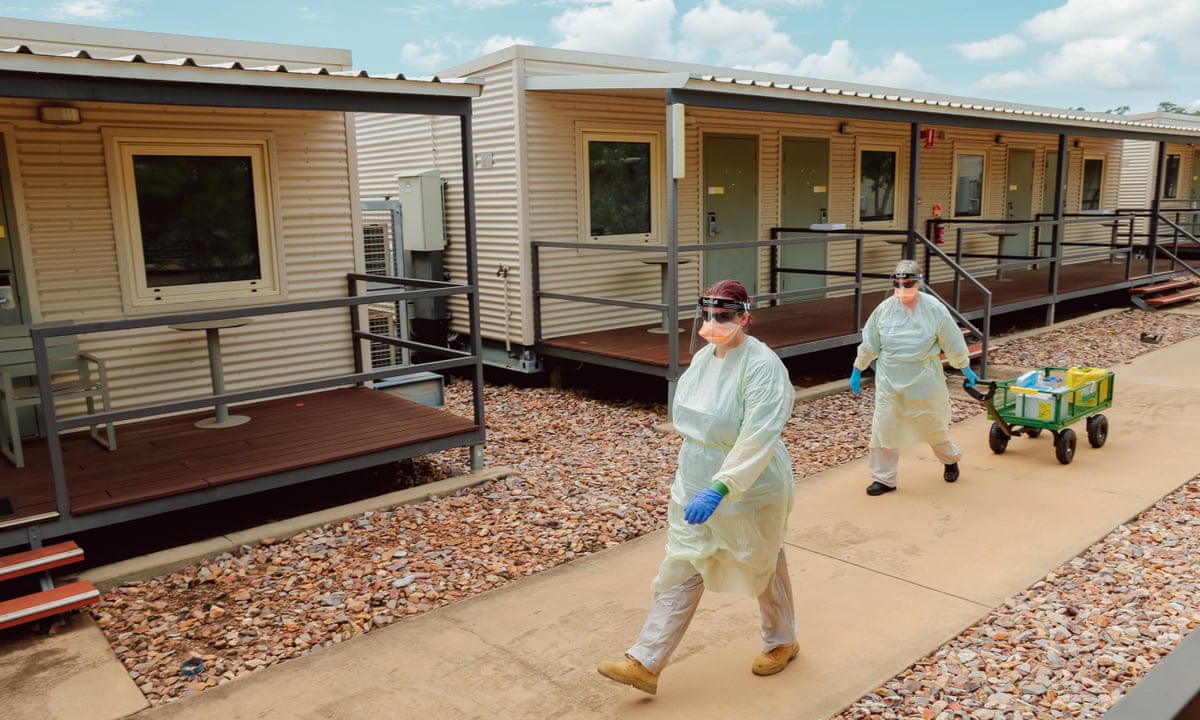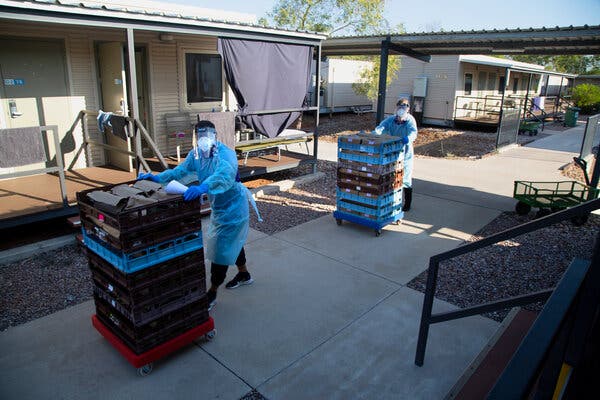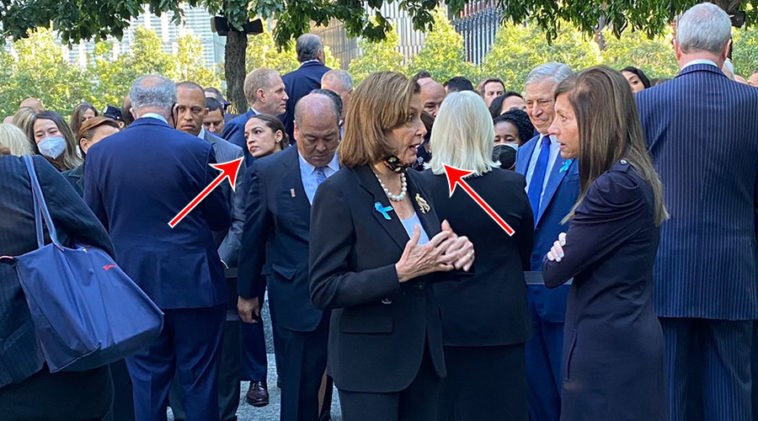
Beta test Australia, NY Times article below. Of course the DHS, military, and police who helped round us up will be in there. Following orders will not save you. Hitler killed the Brownshirts last, you always do. Study the Cambodian Killing Fields. It won’t just be the “unvaxxed” and Trump supporters. It will be anyone inconvenient, anyone with leadership abilities of any kind, either on left or right. Once you’ve got everyone you want inside, just stop delivering the food. Easy. Great Reset Mission Accomplished. The population will be greatly reduced, and the rest micro-chipped like pets.
The excuse for round-ups will be massive numbers of people dropping dead in the coming year from the spike protein injections. But it will be blamed on a variant and the “unvaccinated.” How do we stop it? Stop all mandates, start detoxing from your jab. The mandates provide the pseudo-legal foundation for mass incarceration.
The tricky part is getting these things built without arousing a general alarm, beyond the usual conspiracy theorists who the sheep will bleat down anyway. It’s ok. Just get on the train. Trust the people who still tell you Ivermectin is only for horses, Jeffrey Epstein killed himself, and mRNA spike protein injections are “safe and effective.”
Australia Is Betting on Remote Quarantine. Here’s What I Learned on the Inside.
By Damien Cave
The pandemic has reinforced countries’ peculiar currents of national identity. In Australia, it’s a collectivist urge, sometimes at the expense of personal liberty.
Aug. 20, 2021
HOWARD SPRINGS, Australia — On Day 8 of my two-week stay at Australia’s only remote, dedicated facility for Covid quarantine, I called my 11-year-old daughter at home in Sydney to ask how her day at school had gone. All I heard was a long pause.
“Dad,” she said. “It’s Saturday.”
I looked out the window as if my confusion could be cleared by the brown all around me — the single-story metal lodging, the pathways, the bags of food that had just been dropped off by workers in face shields. It was not yet 5 p.m. and they were delivering dinner?
Such is life in a former mining camp near the northern tip of the country, in a place called Howard Springs — a temporary home for hundreds of domestic and international travelers being forced to wait around long enough to prove they’re Covid-free.
Quarantine has been a physical and temporal in-between ever since the first lazarettos were set up to fight the Black Death in medieval Europe. The practice, as Geoff Manaugh and Nicola Twilley write in their fascinating new book “Until Proven Safe,” is both a medical tool and “an usually poetic metaphor for any number of moral, ethical and religious ills: It is a period of waiting to see if something hidden within you will be revealed.”
Australia stands nearly alone in its bet on quarantine infrastructure as a long-term answer to the pandemic. Two more camps, each with a capacity of about 2,000 people, are being built outside Brisbane and Melbourne, and Sydney and Perth may not be far behind. The sites, called “centers for national resilience,” are an embodiment of the country’s commitment to Covid zero.
Officials maintain that these camps, which are mostly for travelers but can also be used to isolate the contagious, are necessary because hotel quarantine has repeatedly let Covid leak into the community. The current Delta surge that has led to lockdowns for half of the country began in June with an unvaccinated airport driver transporting people back and forth.

Workers delivering dinner. They work in only one block of the quarantine facility at a time to minimize the risk of spreading infection.
Howard Springs, which has yet to have a Covid outbreak traced to it since it opened last year, is the new model.
“If we quantify the risk of where we put people, I think Howard Springs is the lowest risk,” said Peter Collignon, a physician and public health expert at the Australian National University in Canberra. “Hotels are 99 percent effective, and for Australia, that’s the problem — they’re not 100 percent.”
That zero-tolerance attitude has kept Covid deaths far lower than in other countries, while dividing Australia. Most of the travelers I met in quarantine were from Sydney or Melbourne and were trying to get to Western Australia or Queensland, states that had shut their borders to anyone from a location with even a few dozen Covid cases. They would not let us enter and quarantine at our own cost, even when fully vaccinated.
So we had to go to the Northern Territory, the only place in Australia that would accept us. Howard Springs was what Malta had been to the British Empire — a place to let someone else deal with the problem.
And we were among the last ones in. A few days after we landed in Darwin, territory officials declared that we had exploited a “loophole” that would be closed. Howard Springs could no longer be used as an extended layover zone.
“The policy is popular,” said Paul Italiano, an energy executive, who was moving to Perth, the capital of Western Australia, with his family after a few years in Sydney. “When we get back, we’re probably going to want to build a wall too.”
After all, he said, it had worked: Western Australia’s seven-day average for Covid cases during most of the pandemic has been, well, zero.
I wondered if an American like me could warm up to the approach.
Most of us in D block — where I was placed and could talk to a few people at a safe distance from our rooms’ verandas — arrived feeling irritated. Michael Nayda, a marine engineer who lives in Sydney but had a job out of the port in Darwin, said he was frustrated with the people violating lockdown rules and keeping caseloads rising. I was upset about the hassle and cost. The extra flights plus the fees for Howard Springs (2,500 Australian dollars, or $1,825, for 14 days, including food) seemed to make little economic or scientific sense.
But at some point, I noticed an attitudinal shift. Maybe we’d been softened by the desserts — the sharp lemon meringue, the lush chocolate tart. One day, when the food delivery carts rumbled in, I peered down our row and noticed that we were all craning our necks, leaning out from our little balconies, like animals at a zoo.
“It’s a bit Pavlovian, isn’t it?” Mr. Nayda said. “The sound of the trolleys, the paper bags.”
He was right. But it was also a shared experience. Many of us fell into the same daily routine: up early, exercise outside, work or read, nap in the afternoon, return to the veranda for sunset. There was a simple natural rhythm around the most basic human needs — outdoor space and social interaction.
It was a step up, Mr. Nayda said, from the solitary confinement of hotel quarantine, which he’d endured earlier in the pandemic.
Ms. Twilley, co-author of “Until Proven Safe,” told me that Howard Springs resembled the old lazarettos.
The “centers for national resilience” may echo that past — as part of Australia’s strict system of border control, often condemned for its use of indefinite offshore detention for asylum seekers.
“It sounds a bit unfair, but it’s going to be for people from countries like India, the Philippines — places where getting vaccines and public health will be more difficult to track,” Dr. Collignon said. “That’s who is going to be there.”
By the time I left on Friday, it wasn’t just my confusion over week and weekend that made me pause. Australia also seemed to have lost its sense of time and focus. It was letting the pandemic revive its most fundamental urge since British settlement: anxious isolation.
The state-versus-state squabbles felt colonial. The quarantine expansion hinted at a parochial fear of anyone not right next door. Last month, Australia slashed its slim allotment for international arrivals in half, to just 3,000 a week. There are nearly 40,000 Australians trying to get home.
Quarantine in Australia, I realized as I walked away from the camp, snapping a selfie for my daughter, is no longer simply a place. It has become a state of mind. Hopefully it won’t be permanent.
[End NY Times article]
COVID19 recovery rate: 99.8% overall


Above chart source: Bloomberg News

And while quarantine camps are what’s in store for you, the elite continues its “This is real, put on your mask, peasant” skit. Reporting from Anthony Dewitt, NY Democrat party Sept. 11, more “Rules are for thee but not for me” (below)
Pelosi, AOC and other Democratic pols yucking it up with no masks before the cameras show…

After the cameras show up. Credit: Anthony Dewitt

More Important Reading:

 RSS Feed
RSS Feed















 September 15th, 2021
September 15th, 2021  Awake Goy
Awake Goy 
 Posted in
Posted in  Tags:
Tags: 













